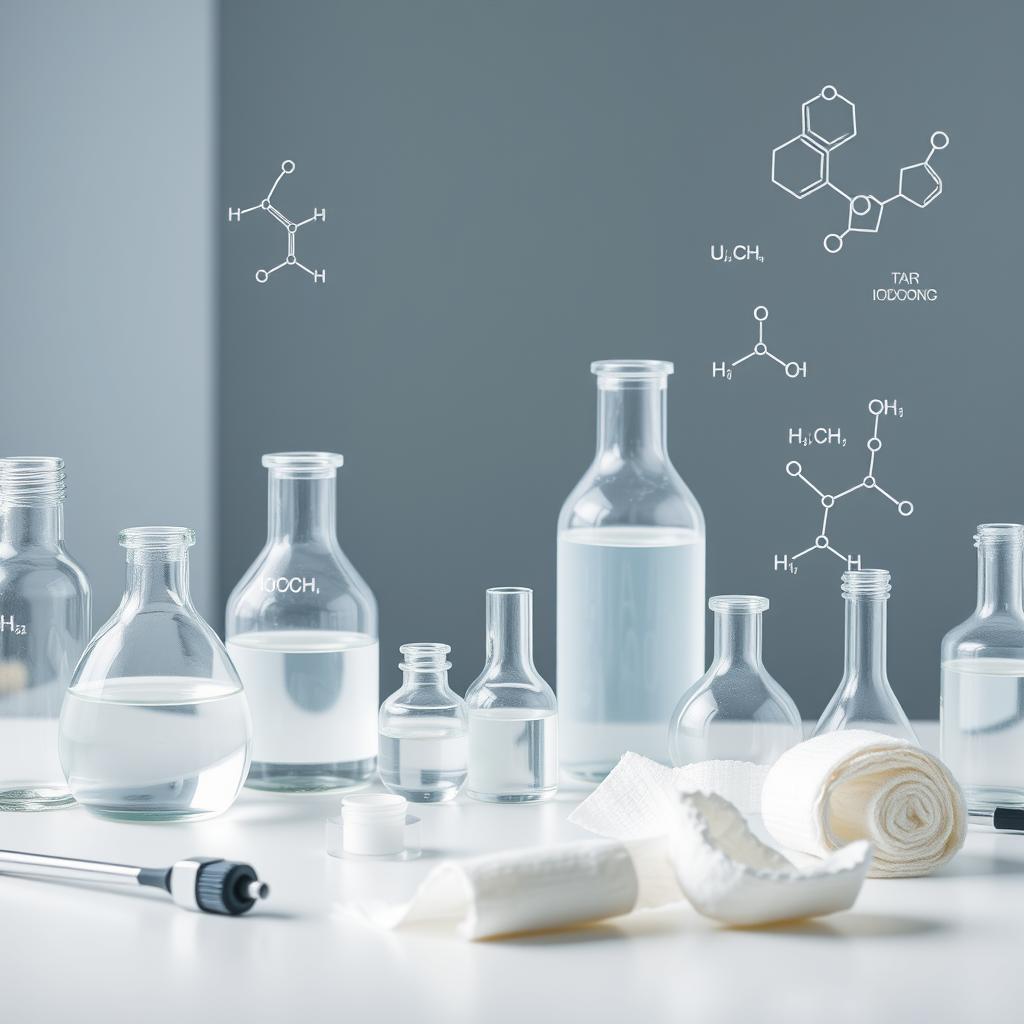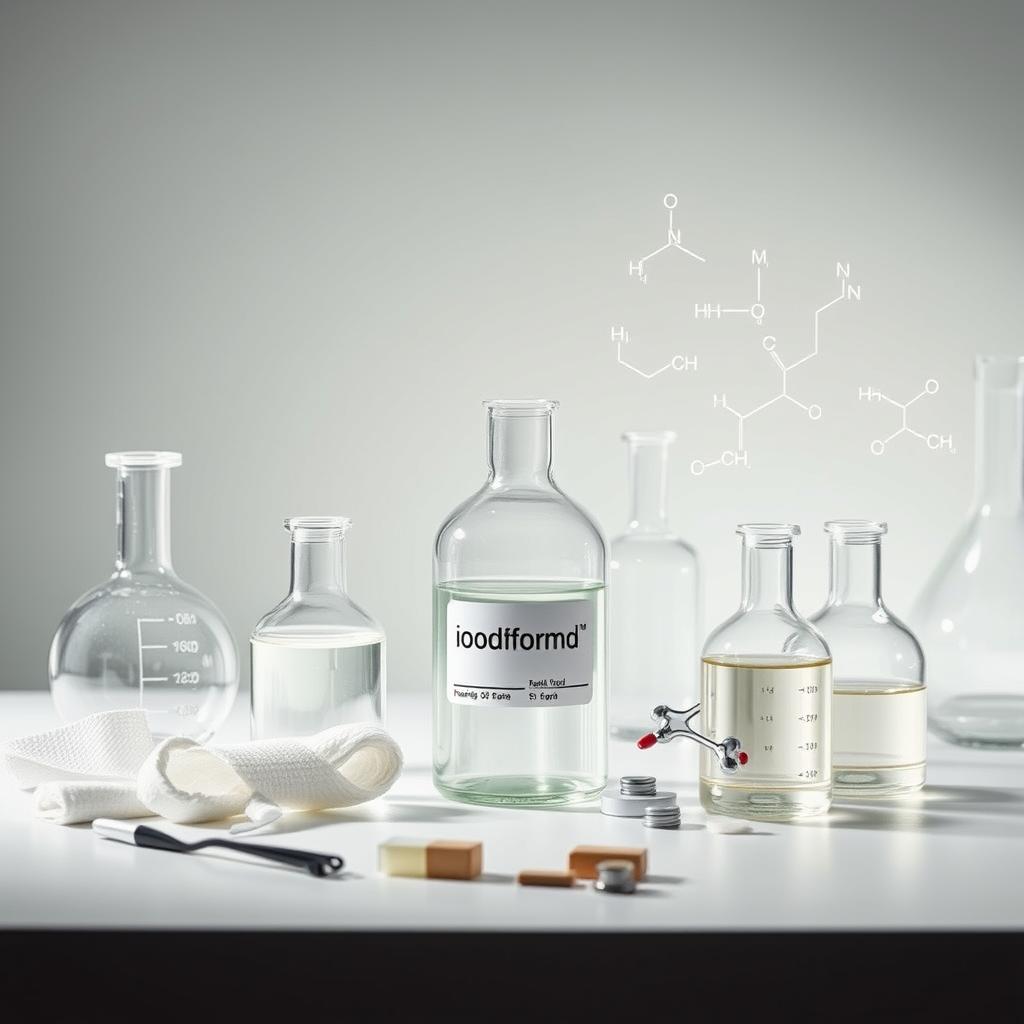Why is iodoform, discovered over 200 years ago, still vital today? It’s used in medicine and industry. It treats minor skin issues and cleans LCDs and LEDs. Its antiseptic qualities make it key in many areas. Iodoform’s role in science is fascinating. It’s used as an antiseptic for minor skin problems. It’s also in disinfectants and for cleaning polarized films. This shows its value in both health and industry.
Click to use Silverigroup personal shopper services
Key Takeaways:
- Iodoform is a 200-year-old molecule with various uses in modern medicine and industry.
- Iodoform uses include treating minor skin conditions and cleaning polarized films.
- Iodoform possesses antiseptic properties, making it a significant component in medical applications.
- Iodoform is used in disinfectant products, showcasing its importance in maintaining hygiene and cleanliness.
- The molecule’s versatility and importance are reflected in its enduring legacy in modern science.
- Iodoform’s applications extend beyond medicine to include industrial uses, such as cleaning LCDs and LEDs.
- Understanding iodoform’s uses and significance can provide valuable insights into its role in modern science.
Click to buy citric acid from Silvairgroup
The Discovery and Historical Significance of Iodoform
In 1822, the discovery of iodoform was a big deal in chemistry and medicine. Its special properties made it key in treating wounds and minor skin issues. The use of iodoform solution and iodoform gauze became common in hospitals, showing its value. As research went on, iodoform’s role in chemistry grew, leading to more antiseptic discoveries. Understanding when and how iodoform was first used helps us see its importance. Some key points about iodoform’s history include:
- Its discovery in 1822 by French chemist Georges-Simon Serullas
- Its initial use as an antiseptic agent in medical applications
- Its impact on the development of modern chemistry and medicine
Iodoform’s history shows the power of scientific discovery. It has shaped our world. As we learn more about iodoform, we remember the importance of keeping our scientific history alive.
Understanding Iodoform’s Chemical Structure
Iodoform is a yellow, crystalline substance with a unique smell. Its chemical formula, CHI3, is key to understanding how it’s made and used. This includes its role in medicine and industry. The way iodoform is structured makes it good at fighting off germs. Knowing its chemical makeup helps us see why it’s useful in so many areas.
- Chemical formula: CHI3
- Appearance: Yellow, crystalline substance
- Odor: Characteristic odor
Click to buy frozen a grade beluga fish from Silverigroup
The iodoform formula is a big part of its structure. It’s important to understand this to know its uses and benefits.
| Property | Description |
|---|---|
| Chemical Formula | CHI3 |
| Appearance | Yellow, crystalline substance |
| Odor | Characteristic odor |

The Unique Properties of Iodoform
Iodoform has special qualities that make it useful in many areas. Its physical characteristics, like a crystalline structure and a unique smell, stand out. Knowing how iodoform works and its properties is key for safe and effective use.
The iodoform properties that help it work well include its ability to react with chemicals. This lets it fight and kill harmful germs. Keeping iodoform stable and properly stored is also important.
Key Characteristics
- Crystalline structure
- Distinctive odor
- Chemical reactivity
- Stability and storage requirements
Understanding these traits helps people use iodoform in medicine and industry. The iodoform mechanism of action is crucial. It makes iodoform a strong antiseptic.
Medical Applications of Iodoform in Modern Healthcare
Iodoform plays a big role in today’s healthcare, especially in wound care. It’s used in iodoform dressing to treat minor skin issues and wounds. This is because it has antiseptic properties that help wounds heal and prevent infections. Iodoform’s power in medicine comes from stopping microorganisms from growing. This lowers the chance of infection and helps wounds heal better. The main advantages of iodoform dressing are:
- Antiseptic properties to prevent infection
- Promotion of healthy wound healing
- Easy to apply and remove
Iodoform is also found in skin disinfectants and antiseptic solutions. Its wide range of uses makes it a key part of modern healthcare. It’s especially useful for treating minor skin problems and wounds. The role of iodoform in medicine shows its lasting importance. Its effectiveness and safety are highly valued. As research finds new ways to use iodoform, its role in healthcare will likely grow even more.

Iodoform as an Antiseptic Agent
Iodoform is a key tool in medicine because of its antiseptic properties. It helps prevent infections and aids in healing. This makes it a crucial part of many medical procedures. Iodoform works by releasing iodine, which kills many harmful germs. This makes it great against bacteria, fungi, and viruses. Understanding the properties of iodoform is key for its use in healthcare.
Effectiveness Against Different Pathogens
Iodoform is effective against many pathogens, including bacteria, fungi, and viruses. Its wide range of activity makes it a valuable tool in medicine. Using iodoform packing offers several benefits:
- Reduced risk of infection
- Promoted healing
- Effective against a broad spectrum of pathogens
Common Medical Preparations
Iodoform comes in many forms, like solutions, ointments, and powders. It’s widely used in medicine to prevent and treat infections. Its role in healthcare is well-established and continues to be important.
Industrial Applications and Technology
Iodoform, discovered over 200 years ago, is now used in many industries. It’s known for its versatility and role in modern tech. For example, it cleans polarized films, like those in LCDs and LEDs. This shows how iodoform adapts to new uses. Iodoform’s unique properties make it perfect for cleaning sensitive surfaces. It’s widely used where quality and precision matter. Some key uses include:
- Cleaning of polarized films for LCDs and LEDs
- Manufacturing of electronic components
- Pharmaceutical applications
New uses for iodoform are likely as research and development grow. Its long history and ongoing use prove its lasting value in many fields. Iodoform’s unique structure and properties make it valuable in industry. As technology advances, iodoform’s role is expected to grow. Its ability to adapt and improve manufacturing processes is key to its enduring importance.
| Industry | Application of Iodoform |
|---|---|
| Electronics | Cleaning of polarized films for LCDs and LEDs |
| Pharmaceuticals | Manufacturing of certain medications |

Safety Considerations and Proper Handling
It’s important to handle iodoform safely to avoid harm. Knowing how to use iodoform safely lets us enjoy its benefits. This means being careful about risks and side effects, like skin irritation and allergies. We can avoid these by following storage tips and emergency plans.
Both doctors and workers need to know how to handle iodoform safely. Here are some key things to remember:
- Wear protective gear, such as gloves and masks, when handling iodoform
- Store iodoform in a well-ventilated area, away from heat sources and flammable materials
- Follow proper disposal procedures to prevent environmental contamination
| Risk | Prevention | Response |
|---|---|---|
| Skin Irritation | Wear protective gloves | Wash affected area with soap and water |
| Allergic Reactions | Monitor for signs of allergy | Administer antihistamines or seek medical attention |
By focusing on safety considerations related to iodoform uses, we can keep using this useful substance. This way, we protect people and the environment.
Environmental Impact and Sustainability
The use of iodoform can harm our environment. It can pollute water and soil. It’s important to look at how iodoform affects our planet. When we talk about the environmental impact of iodoform, we consider a few things:
- Contamination of water sources
- Soil pollution
- Impact on wildlife and ecosystems
To lessen the environmental impact of iodoform, we need to use it wisely. This means storing and disposing of it correctly. We should also find other uses for it. By learning about the environmental impact of iodoform and acting to reduce it, we can help our planet. This way, we ensure a better future for all.
Conclusion: The Enduring Legacy of Iodoform in Modern Science
Iodoform’s legacy in science shows its importance and flexibility. Since its discovery in 1822, it has been crucial in medicine and industry. Its special structure, antiseptic qualities, and ability to adapt make it key in many areas. The story of iodoform reminds us of the power of discovery and the value of scientific progress. This 200-year-old molecule’s lasting impact shows how innovations can keep shaping our world, long after they start.
Iodoform’s journey from a lab find to a modern-day staple is a sign of science’s strength and flexibility. It has proven to be timeless, inspiring future scientists and innovators. Its tale highlights the power of scientific exploration and the lasting effects of even small beginnings.
FAQ – Iodoform: How this 200-year-old molecule is used today
What is iodoform, and how is it used today?
Iodoform is a molecule discovered 200 years ago. It’s used today as an antiseptic for minor skin issues. It’s also in disinfectants and for cleaning LCDs and LEDs. Its strong antiseptic qualities make it very useful.
When was iodoform discovered, and what were its early medical applications?
Iodoform was found in 1822, a big step in chemistry and medicine. It was first used for its antiseptic properties. It helped treat wounds and minor skin problems. Soon, using iodoform solution and gauze became common in medicine.
What is the chemical formula of iodoform, and why is it important?
Iodoform’s formula is CHI3. Knowing its chemical structure helps us understand its uses. It’s key for its synthesis and applications in medicine and industry.
What are the unique properties of iodoform?
Iodoform has a crystalline structure and a distinct smell. Its chemical reactivity makes it a strong antiseptic. It targets and kills pathogens. Understanding its mechanism and properties is crucial for safe use. Its stability and storage are also important to keep it effective.
How is iodoform used in modern healthcare?
In modern healthcare, iodoform is vital, especially in wound care. It’s used in dressings for minor skin issues and wounds. Its antiseptic properties help heal and prevent infection.
What makes iodoform an effective antiseptic agent?
Iodoform’s effectiveness comes from releasing iodine, toxic to many pathogens. It works against bacteria, fungi, and viruses. It’s used in medical procedures to prevent infection and aid healing.
What are the industrial applications of iodoform?
Iodoform is also used in industry, especially for cleaning LCDs and LEDs. It cleans these surfaces without damaging them. This shows how iodoform remains relevant today, adapting to new technologies.
What safety considerations are important when handling iodoform?
Handling iodoform requires caution. It can cause skin irritation and allergic reactions. Following proper storage and having emergency plans are key to safety.
What is the environmental impact of iodoform, and how can its sustainability be addressed?
Iodoform’s production, use, and disposal can harm the environment. It can contaminate water and soil. We need to evaluate its sustainability and find ways to reduce its environmental impact.

